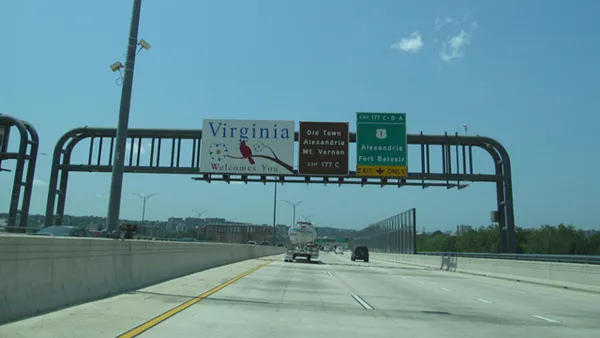Virginia opened 29 miles of high-occupancy toll lanes to business on December 29 of 2014. What lessons are drivers and policy makers taking from the ongoing test of the concept?
Washington Post columnist Robert Thomson examines the theory behind high-occupancy toll (HOT) lanes, especially as recently scaled-up to a new degree by 29 miles of HOT lanes of interstates 95 and 395 in Virginia.
"It’s too soon to know whether the lanes will achieve the lofty goals for traffic relief set by their proponents," writes Thomson. "But the concerns raised by early adapters to life in the HOT lanes provide some indication of what happens when paper theory meets pavement."
The article also sets the context of the national conversation about transportation funding and the state of Virginia's potential expansion of HOT lanes to Interstate 66. To address those possibilities with the I-95 and I-395 HOT lanes as a case study, Thomson goes on to examine "five of the top issues drivers are raising about the new I-95 HOT lanes."
Those five issues are summed up here, with lots more details in the article:
- The transition zone.
- Knowing the toll.
- Are they ever free?
- Is it worth it?
- Are carpoolers protected?
FULL STORY: Virginia’s HOT lanes could be the future of U.S. transportation

Analysis: Cybertruck Fatality Rate Far Exceeds That of Ford Pinto
The Tesla Cybertruck was recalled seven times last year.

National Parks Layoffs Will Cause Communities to Lose Billions
Thousands of essential park workers were laid off this week, just before the busy spring break season.

Retro-silient?: America’s First “Eco-burb,” The Woodlands Turns 50
A master-planned community north of Houston offers lessons on green infrastructure and resilient design, but falls short of its founder’s lofty affordability and walkability goals.

Test News Post 1
This is a summary

Analysis: Cybertruck Fatality Rate Far Exceeds That of Ford Pinto
The Tesla Cybertruck was recalled seven times last year.

Test News Headline 46
Test for the image on the front page.
Urban Design for Planners 1: Software Tools
This six-course series explores essential urban design concepts using open source software and equips planners with the tools they need to participate fully in the urban design process.
Planning for Universal Design
Learn the tools for implementing Universal Design in planning regulations.
EMC Planning Group, Inc.
Planetizen
Planetizen
Mpact (formerly Rail~Volution)
Great Falls Development Authority, Inc.
HUDs Office of Policy Development and Research
NYU Wagner Graduate School of Public Service


























